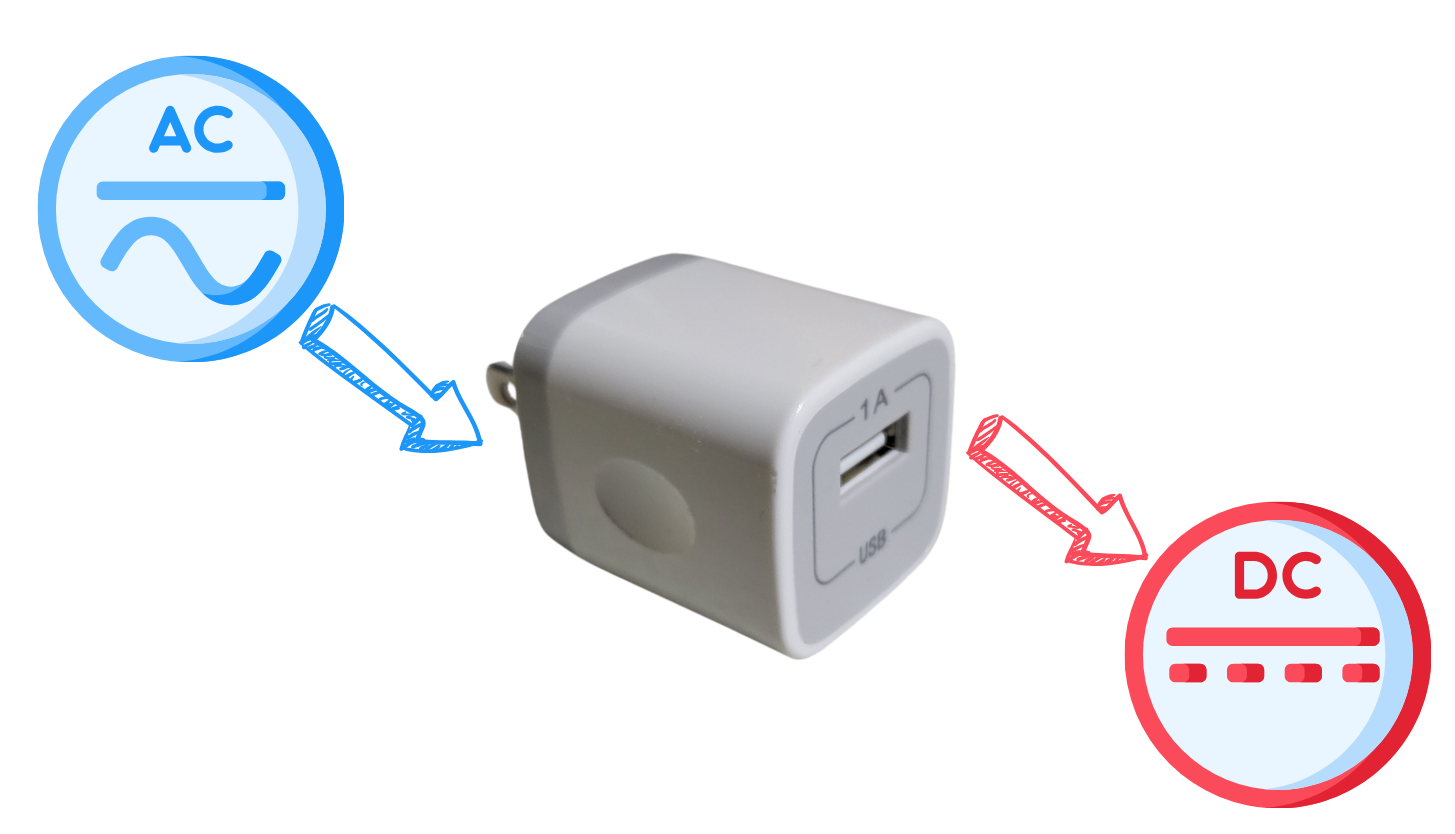Why AC?
Why AC?
During this course, we have been wiring circuits with DC power. But we convert AC power from the wall to DC to make that happen. In order to do so, we take the power from your outlet, use a transformer to step it down to a much lower voltage, use a rectifier to convert it to DC, and then add in some capacitors and a voltage regulator to provide a nice, smooth output of 5 volts at 1 amp.

The reason your home is wired for AC rather than DC is both practical and historical. AC power has a lower loss when being transmitted over long distances. Secondly, AC is very good about being converted from a higher to a lower voltage (or from low to high) without much loss either. The process of ‘stepping up’ or ‘stepping down’ the voltage in AC is relatively simple.
Because of these reasons, it made sense to create power grids using AC (more on that in the next section), which led to early adoption. Once a system or standard is in place, it is relatively difficult to change it (I’m looking at you, imperial units!).
DC is used in electronics because electronics need a stable, consistent form of electricity. Your AC power can fluctuate. Depending on the load on the grid and the power generators, your voltage can change throughout the day. During periods of extreme use, this can lead to ‘brownouts’ where voltage drops significantly. AC devices can still function during a brownout, but this may lead to damage to more sensitive appliances. DC equipment goes through several stages of filtering and voltage regulation to ensure the very sensitive components get the exact power they need.